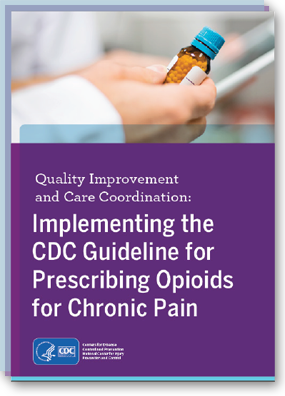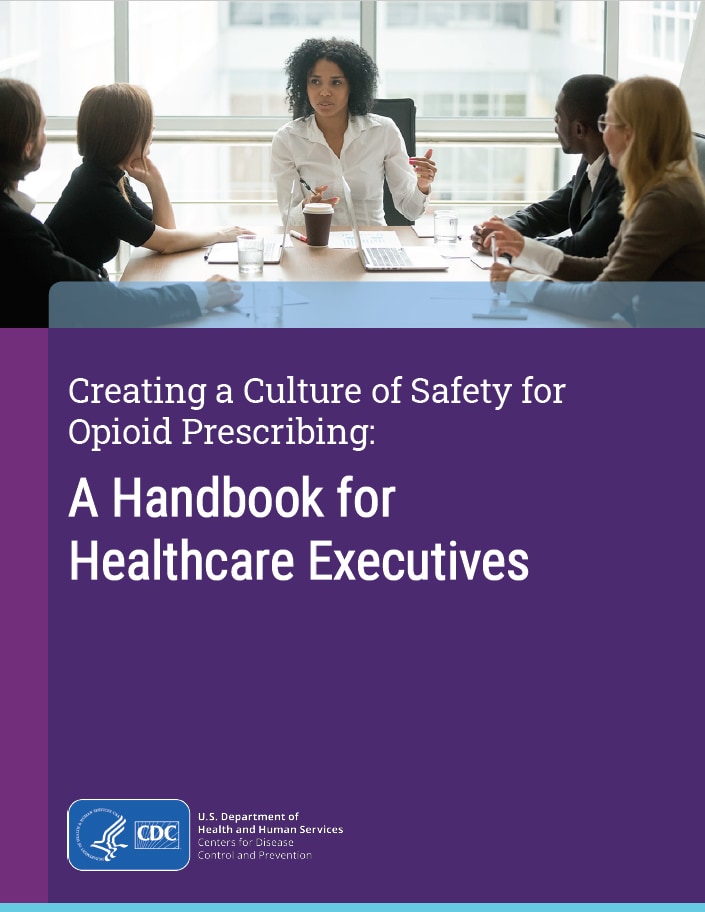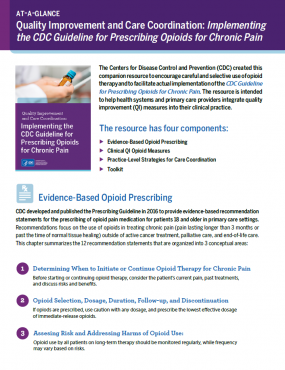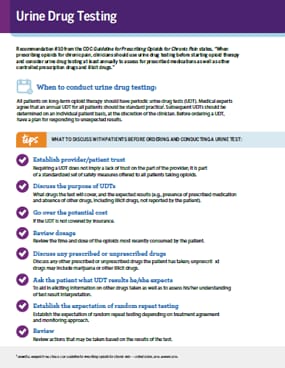CDC has released the 2022 CDC Clinical Practice Guideline for Prescribing Opioids for Pain, which updates and replaces the 2016 guideline. We are in the process of updating available resources and materials. Please refer to the 2022 Clinical Practice Guideline for current CDC recommendations and implementation strategies.
Quality Improvement (QI) and Care Coordination
Implementing the CDC Guideline for Prescribing Opioids for Chronic Pain
The CDC aims to save lives and prevent opioid misuse, opioid use disorder, and overdose by equipping providers with the knowledge, tools, and guidance they need. With these goals in mind, CDC developed the Quality Improvement and Care Coordination: Implementing the CDC Guideline for Prescribing Opioids for Chronic Pain [PDF] resource, which is intended to help healthcare systems integrate the Guideline and associated quality improvement (QI) measures into their clinical practice.
This resource offers primary care providers, practices, and healthcare systems a framework for managing patients who are on long-term opioid therapy.
Overview
CDC, in collaboration with clinicians in the field, developed and published the resource Quality Improvement and Care Coordination: Implementing the CDC Guideline for Prescribing Opioids for Chronic Pain as a framework for primary care providers, practices, and healthcare systems to manage patients on long-term opioid therapy. Patients should receive appropriate pain treatment based on a careful consideration of the benefits and risks of treatment options. CDC aims to offer healthcare systems and practices a provider-focused resource to help move the content of the CDC Guideline for Prescribing Opioids for Chronic Pain, published in March 2016, into clinical practice to support providers as they deliver the best possible healthcare to their patients.
A set of 16 clinical quality improvement (QI) measures for improving opioid prescribing were developed that align with the recommendations in the CDC Guideline. These are voluntary measures intended to provide healthcare systems with the means to track their progress in implementing recommended practices over time. Guidance on operationalizing each QI measure to monitor progress is included. Practice-level strategies help organize and improve the management and coordination of long-term opioid therapy, and include:
- Using an interdisciplinary team approach
- Establishing practice policies and standards
- Using electronic health record (EHR) data to develop registries and track QI measures
Resource Toolkit
An appendix to the Quality Improvement and Care Coordination resource, contains a toolkit. The Toolkit includes examples of existing materials, tools, and resources developed and used by other practices, which have been found to be useful and readers can use or modify for their own needs. This resource focuses on long-term opioid therapy for managing chronic pain. It is not intended for pain management during active cancer treatment, palliative care, or end-of-life care.
Fact sheets and other tools developed as a supplement to the Quality Improvement and Care Coordination resource.
Quality Improvement and Care Coordination At-a-Glance [PDF]
This factsheet provides a high-level overview of the Quality Improvement and Care Coordination resource, covering evidence-based opioid prescribing, clinical quality improvement (QI) measures for opioid prescribing, and practice-level strategies for care coordination.
Quality Improvement (QI) Measures At a Glance [PDF]
This factsheet provides a more detailed overview of the Clinical Quality Improvement (QI) measures for opioid prescribing.
Urine Drug Testing (UDT) factsheet [PDF]
This factsheet provides a high-level overview of the Quality Improvement and Care Coordination resource, covering evidence-based opioid prescribing, clinical quality improvement (QI) measures for opioid prescribing, and practice-level strategies for care coordination.





